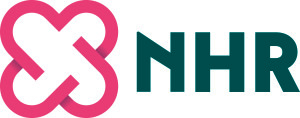Optimizing patient value for heartcare
The Netherlands Heart Registry is the result of a merger between, BHN, NCDR and Meetbaar Beter. By combining the strengths of the three former organisations, the NHR aims to contribute to the implementation of VBHC in cardiovascular care in the Netherlands by collecting, analysing and reporting data about treatments of patients with specific medical heart conditions. Although registering and reporting data is an essential part of the NHR, an equally (or even more) important part comes after the publication of data. Subsequently, patient relevant outcomes form the input for the development of outcome-based PDCA-cycles. The NHR tries to facilitate the successful implementation of VBHC in the participating centres as much as possible and in several different dimensions.
First of all, NHR also acts as a learning platform in which participators share their experiences and lessons learned. Since outcomes of more than 250.000 patients have become transparent in Dutch cardiovascular care (due to the efforts of the NHR) there have been some significant improvements in multiple outcomes on a national scale: i.e. decline of mortality after AVR, TAVI and CABG, decline of surgical re-explorations after AVR. Within the NHR learnings are materialized in various ways. For example in registry commissions in which surgeons from different hospitals share their learnings. But also in the form of the out roll of improvement projects to other hospitals. Up until now one improvement project (Isala Safety Check) has been implemented in several other centres, while the implementation of three others is currently being explored: (1) The Haga Braincare Strategy; a strategy to reduce the occurrence of CVA’s and acute confusional states, (2) The OLVG contrast dose protocol; a protocol to reduce the incidence of mortality after PCI among patients with kidney insufficiency, and (3) The Cleveland Clinic Check; A safety check to reduce the occurrence of morality and a surgical re-explorations after an open-heart surgery. There are also several local improvement projects that have not yet been shared with others. An example of this is the reduction of deep sternalwoundinfections (DSWI’s) after a CABG in the OLVG hospital, or the reduction of cardiac tamponades after a pulmonary artery catheterization in the Catharina Hospital.
Secondly, NHR recognizes the importance of well-aligned financial stimuli (i.e. the eradication of perverse stimuli) such as bundled payments. It has therefore developed a value-based purchasing model, in collaboration with Menzis, that rewards hospitals that have realized an improvement in outcomes and penalizes hospitals that have realized worse outcomes. This is an important step in creating the right context for an outcome based PDCA-cycle especially at the administrative level. So far, 10 different hospitals have subscribed to participate in a first implementation of this model.
Thirdly, the NHR has developed a model in which costs and outcomes are combined to calculate patient value. In a new project with several heart centres this model is going to be applied. Ideally, this is going to generate valuable new insights on how to improve patient value. Lastly, the NHR tries to help centres to set up an adequate PDCA-cycle. To accomplish this, the NHR has developed a model based on interviews with clinics that are considered as best practices in the implementation of VBHC, the Deming cycle and the 7s McKinsey model

